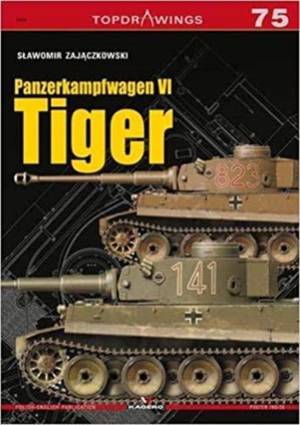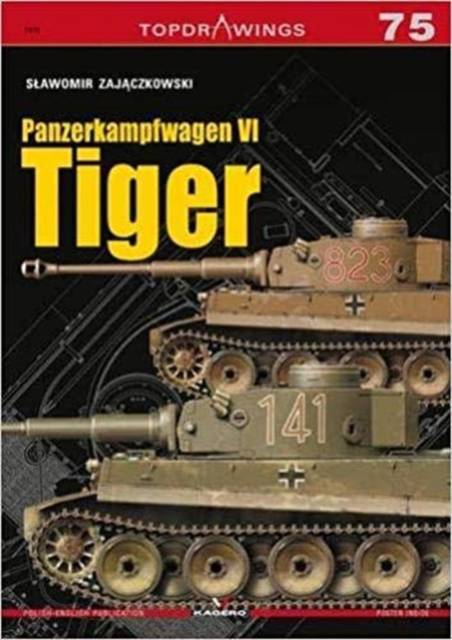
- Afhalen na 1 uur in een winkel met voorraad
- Gratis thuislevering in België vanaf € 30
- Ruim aanbod met 7 miljoen producten
- Afhalen na 1 uur in een winkel met voorraad
- Gratis thuislevering in België vanaf € 30
- Ruim aanbod met 7 miljoen producten
Zoeken
€ 27,95
+ 55 punten
Omschrijving
The German heavy tank Panzerkampfwagen VI Tiger is a vehicle known even to laymen. It was heavily armored and armed with a deadly 88 mm gun. Despite their legend, the Tigers were plagued by several technical problems, especially with propulsion, which often did not allow them to fully use their combat potential.
The main motivator for designing the Pz.Kpfw. VI was eager to install a Flak 36 antiaircraft gun 36 caliber 88 in the turret. It was a weapon that could destroy Soviet tanks on long distances. In addition, it was necessary to build a tank able to withstand fire from the T-34/76 guns, which effectively eliminated the German medium tanks Pz.Kpfw. III and IV.
A competition for a tank that fulfills these requirements was set, and in April 1942 the prototypes of Porshe and Henschel went for the final duel. After a series of tests, the tank developed by Henshel proved to be better. It received the designation Sd.Kfz. 181 Pz.Kpfw. VI Tiger Ausf. H1 and went into production at the plants in Kassel-Mittelfeld and Wegmann AG.
The tank was plagued by many teething problems, and as a result, many subsequent construction changes were introduced in the course of production. Considering the periods of their implementation, it is possible to extract Tigers of early production series, vehicles after modification and vehicles of late production series.
The main motivator for designing the Pz.Kpfw. VI was eager to install a Flak 36 antiaircraft gun 36 caliber 88 in the turret. It was a weapon that could destroy Soviet tanks on long distances. In addition, it was necessary to build a tank able to withstand fire from the T-34/76 guns, which effectively eliminated the German medium tanks Pz.Kpfw. III and IV.
A competition for a tank that fulfills these requirements was set, and in April 1942 the prototypes of Porshe and Henschel went for the final duel. After a series of tests, the tank developed by Henshel proved to be better. It received the designation Sd.Kfz. 181 Pz.Kpfw. VI Tiger Ausf. H1 and went into production at the plants in Kassel-Mittelfeld and Wegmann AG.
The tank was plagued by many teething problems, and as a result, many subsequent construction changes were introduced in the course of production. Considering the periods of their implementation, it is possible to extract Tigers of early production series, vehicles after modification and vehicles of late production series.
Specificaties
Betrokkenen
- Auteur(s):
- Uitgeverij:
Inhoud
- Aantal bladzijden:
- 20
- Taal:
- Engels
- Reeks:
- Reeksnummer:
- nr. 7075
Eigenschappen
- Productcode (EAN):
- 9788366148406
- Verschijningsdatum:
- 29/08/2019
- Uitvoering:
- Paperback
- Formaat:
- Trade paperback (VS)
- Afmetingen:
- 213 mm x 300 mm
- Gewicht:
- 90 g

Alleen bij Standaard Boekhandel
+ 55 punten op je klantenkaart van Standaard Boekhandel
Beoordelingen
We publiceren alleen reviews die voldoen aan de voorwaarden voor reviews. Bekijk onze voorwaarden voor reviews.











